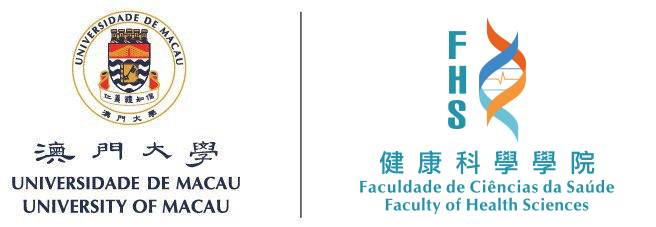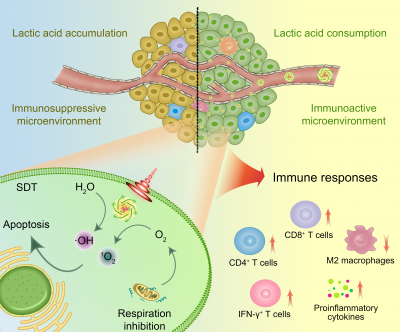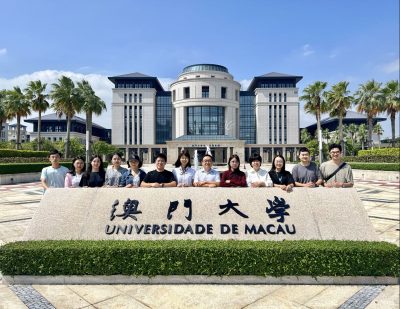A research team led by Professor Yunlu DAI in the Faculty of Health Science (FHS), University of Macau (UM), has successfully developed a Metal-Phenolic Network (MPN)-based nanomedicine, which combines cancer sonodynamic therapy (SDT) and metabolic therapy. This nanomedicine can reverse immunosuppressive tumor microenvironment (TME) and evoke highly efficacious cancer immunosurveillance, leading to the inhibition of tumor growth and metastasis. This study has been published in the internationally renowned journal ACS Nano.
Benefiting from the multifarious biological functions, numerous polyphenols have been applied in the food and medical industry. MPN making use of the coordination between phenolic ligands in polyphenols and multivalent metal ions has emerged as promising candidate for nanomedicine, most notably through the service as multifunctional theranostic nanoplatform. In this research, aiming at the activation of systemic antitumor immunity and remodeling the immunosuppressive TME, an MPN-based nanocomplex (polyethylene glycol (PEG)-Chlorin e6 (Ce6)-Fe2+lactate oxidase (LOX)/Atovaquone (ATO)) integrating SDT and TME modulation was developed. A new sonosensitizer, PEG-Ce6 polyphenol derivative, was first synthesized for efficacious SDT, an inducer to the immune responses. However, the limited pro-inflammatory fact of PEG-Ce6 encouraged to introduce an acidic immunosuppressive TME modulator LOX into the MPN system, which can consume the excrescent lactic acid in tumors and lead to the alleviation of acidic TME. Meanwhile, due to the SDT and lactic acid consumption are all oxygen-consuming processes, a mitochondria respiration inhibitor ATO was encapsulated to slow the exacerbation of tumor hypoxia. After treatment, efficient immunosuppressive revision was evidenced by the increased secretion of the inflammatory cytokines, increased infiltration of the activated cytotoxic T lymphocytes, and decreased infiltration of the anti-inflammatory M2 macrophages in tumor tissues. This combinational strategy successfully inhibited the tumor progression and opened a new applicational area for MPN-based nanomedicine.
Prof. Yunlu DAI is the corresponding author, and his PhD student Zhan ZHANG is the first author. Postdoctoral fellows Bei LI, Lisi XIE, Jie LI, and PhD students Wei SANG, Hao TIAN, and Guohao WANG also made important contributions to this study. This project is funded by the Science and Technology Development Fund, Macao SAR (File Number: 0109/2018/A3 and 0011/2019/ AKP), the UM Research Fund (File Number: SRG2018-00130-FHS), and the Shenzhen-Hong Kong-Macau Science and Technology Program (File Number: SGDX20201103093600004). The full text of the research article can be viewed at: https://pubs.acs.org/doi/10.1021/acsnano.1c08026



